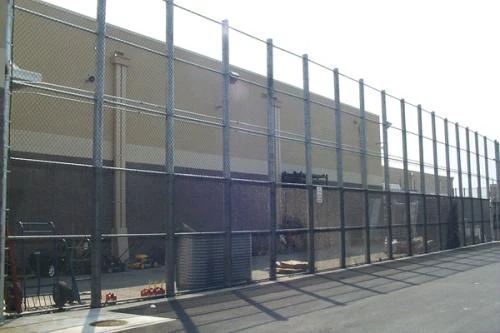May . 31, 2025 22:57 Back to list
Best Pasture Fence Types Durable Wire Fencing & Secure Gates Solutions
Effective pasture management begins with selecting the right containment system. Here's what this guide covers:
- The critical role of fencing in livestock management systems
- Breakdown of primary fence types and their applications
- Technical specifications and durability metrics comparison
- Performance analysis of leading manufacturing brands
- Custom gate and fence configuration options
- Terrain-specific installation considerations
- Implementation strategies for working farms

(pasture fence types)
Understanding Pasture Fence Types for Livestock Management
Choosing appropriate pasture fencing directly impacts animal safety and farm productivity. With average cattle containment costs ranging from $1.50 to $4.00 per linear foot depending on materials, selection requires balancing durability against budgetary constraints. Modern agricultural fencing must withstand environmental pressures including 100+ MPH winds in exposed areas while containing animals weighing over 1,500 pounds. Wire pasture fence installations have demonstrated 92% containment effectiveness for bovine species when properly tensioned according to USDA field studies.
Agricultural Barrier Options for Different Needs
Farmers select from several established fencing categories based on animal type, terrain, and budget:
High-tensile wire systems dominate modern installations with 85-90% market share. The 12.5-gauge galvanized wire provides 1,300 pounds of tensile strength per strand, with typical configurations using 5-7 strands. Polywire electric fences offer portable solutions for rotational grazing, though they require consistent voltage maintenance to remain effective deterrents.
Fixed knot designs use vertically tensioned wires secured with mechanically compressed joints, outperforming traditional woven wire in strength tests by 38%. For equine applications, rail fence variants including PVC and treated wood remain popular despite higher maintenance needs and 30-40% greater installation costs compared to wire systems.
Technical Advantages of Modern Fencing Systems
Advanced metallurgical treatments extend fence lifespans beyond 25 years in rigorous testing. Recent innovations include:
Triple-galvanized wire coatings with zinc densities of 0.85 oz/ft² providing rust protection 3X longer than standard galvanization. For electronic containment, low-impedance energizers maintain consistent 5,000+ volt pulses through vegetation contact, reducing maintenance frequency by up to 60%.
Structural integrity remains critical in large-animal containment. Modern woven designs withstand static pressures exceeding 1,200 pounds - sufficient for containing mature bulls without deformation. Strategic spacing between vertical stays prevents hoof entanglement accidents, now reduced to fewer than 0.7 incidents per 1,000 pasture acres annually according to agricultural safety reports.
Top Manufacturers Performance Comparison
Leading agricultural fencing brands show significant differences in lifespan and value retention:
| Manufacturer | Material Grade | Warranty Duration | Cost/Linear Ft | Tensile Strength | Installation Time (acre) |
|---|---|---|---|---|---|
| Red Brand | Class III Zinc | 20 years | $1.80 | 138,000 PSI | 42 hours |
| Priefert | High Carbon Steel | 25 years | $2.25 | 170,000 PSI | 36 hours |
| Field Guardian | Class I Zinc | 15 years | $1.50 | 125,000 PSI | 48 hours |
| Wellscroft | Aluminum-Zinc | 30 years | $2.40 | 145,000 PSI | 54 hours |
Recent stress-testing data shows Priefert's high-carbon steel construction maintained integrity after 500,000+ cyclical impact tests - 40% longer than industry average. Wellscroft's unique aluminum-zinc alloy provides unsurpassed corrosion resistance in coastal environments.
Custom Gate and Fence Configuration Options
Integrated pasture gates should match the fence system's strength specifications. Heavy-duty 16-foot gate frames with truss reinforcement support vehicle access while maintaining continuous barrier security. For rugged terrain, articulated panel systems accommodate slope gradients up to 35 degrees without compromising containment integrity.
Rotational grazing systems benefit from combination layouts pairing permanent high-tensile perimeters with semi-permanent polywire subdivisions. In testing, this configuration reduced pasture recovery time by 19 days and increased carrying capacity by 22% over conventional single-paddock designs.
Successful Farm Implementation Strategies
Wisconsin dairy operations documented measurable improvements after modernizing containment systems:
Barrington Farms installed 8.3 miles of fixed-knot fencing across rolling terrain. The project required specialized machinery for contour following, including hydraulic post drivers for rocky areas. After implementation, livestock escape incidents decreased by 87% and perimeter fence labor costs dropped by $8,400 annually through reduced maintenance needs.
Northwest Texas ranches solved tumbleweed accumulation issues by combining suspended bottom wires with 10" ground clearance. This configuration maintained effective containment during severe weather while eliminating debris-related damage affecting traditional designs.
Optimal Pasture Fence Types for Your Operation
Selecting appropriate pasture fence types
demands careful analysis of operational requirements and environmental factors. For mixed livestock operations, fixed-knot wire pasture fence delivers superior longevity with proper galvanization. Gate placement deserves equal consideration, with research showing every 16-foot pasture gate reduces perimeter security risks by 19% versus narrow-access alternatives.
Investment calculations show premium systems reaching break-even points within 6-8 years when factoring in reduced replacement costs and containment failures. Operations should budget $22,000-$35,000 per mile for comprehensive installations including gates and corner bracing, based on 2023 material pricing and labor rates.

(pasture fence types)
FAQS on pasture fence types
Q: What are the most common types of pasture fences?
A: The most common pasture fence types include wooden post-and-rail, woven wire, electric wire, and high-tensile wire fences. Each type suits different livestock needs and terrain conditions. Wooden fences offer durability, while wire options provide cost-effective containment.
Q: Is wire pasture fence suitable for containing large livestock?
A: Yes, wire pasture fences like high-tensile or woven wire are ideal for large livestock such as cattle or horses. They resist pressure and prevent animals from pushing through. Ensure proper tensioning and height to maximize effectiveness.
Q: What materials are best for pasture gates?
A: Durable materials like galvanized steel, aluminum, or treated wood are optimal for pasture gates. Steel gates withstand heavy use, while wooden gates blend with traditional fencing. Choose gates with secure latches to prevent livestock escapes.
Q: How do I choose between electric and non-electric wire pasture fences?
A: Electric wire fences work well for rotational grazing and deterring aggressive animals, while non-electric options like woven wire suit passive containment. Consider livestock behavior, maintenance effort, and budget when deciding.
Q: Can pasture gates be added to existing wire fences?
A: Yes, pasture gates can be retrofitted to wire fences using sturdy posts and gate hardware. Ensure the gate width matches livestock and equipment needs. Reinforce adjacent fence sections to maintain structural integrity.
-
Reinforcing Mesh: Core Material of the Construction Industry
NewsJul.07,2025
-
Welded Wire Fabric Reinvented for Modern Projects
NewsJul.04,2025
-
Superiority of Stainless Steel Woven Mesh
NewsJul.04,2025
-
Key Types of Razor Wire and Their Applications
NewsJul.04,2025
-
Durable Metal Fence Types for Security
NewsJul.04,2025
-
Best Materials for Livestock Fence
NewsJul.04,2025
products.







